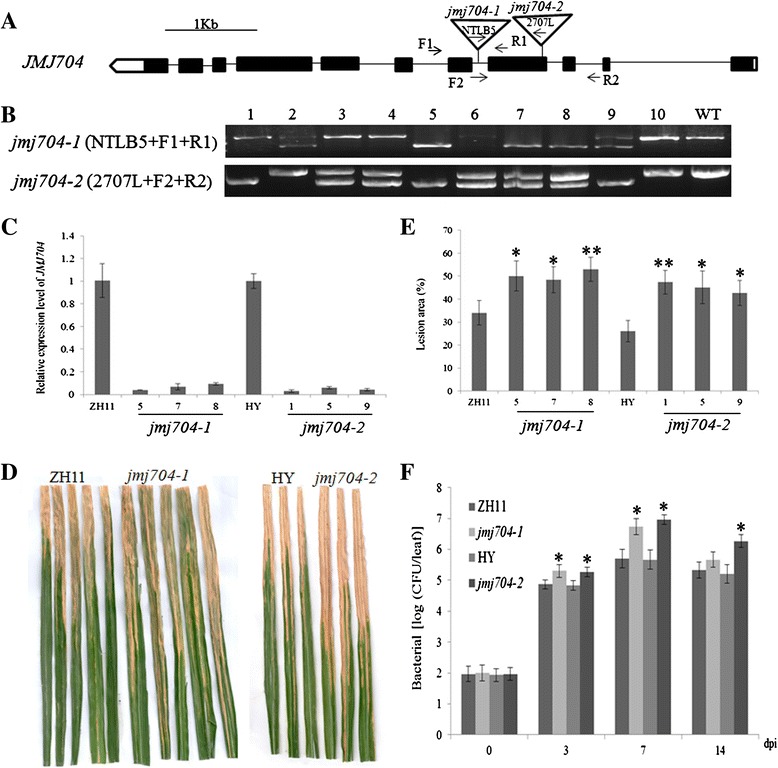Fig. 3.

Characterization of mutation of JMJ704. a Schematic representation of T-DNA insertion mutations jmj704-1 and jmj704-2 (open triangle). The positions of the primers used for genotyping are indicated. b Genotyping of jmj704-1 and jmj704-2 segregates and the wild-type (WT) using the primer sets as indicated. c qRT-PCR detection of JMJ704 transcripts in jmj704-1 and jmj704-2 lines. d Leaf phenotypes. The booting stage plants (jmj704-1 /ZH11 and jmj704-2/HY) were inoculated Xoo by clipping method respectively. Leaf phenotype was observed at 15 days after inoculation. e Leaf lesion area (%) in the plants (jmj704-1 /ZH11 and jmj704-2/HY) at 15 days after inoculation with the Xoo. f Bacterial growth rate (Log [Colony-Forming Units/leaf]) measured at 0 (2 h post inoculation) and 3 to 14 days post inoculation (dpi) on mutants jmj704-1 and jmj704-2 leaves compared with the wild-type ZH11 and HY, respectively. Bar indicates the SD from three biological replicates. Significance of differences between the wild-type and mutants was determined by Student’s t tests. *P < 0.05, **P < 0.01
